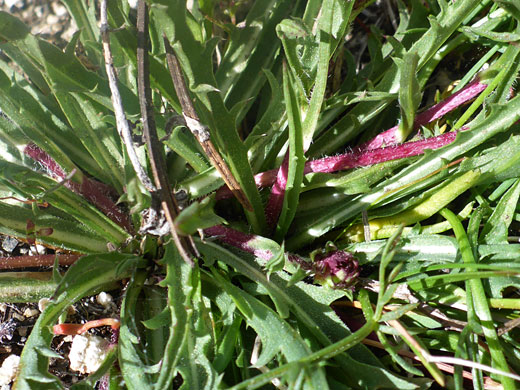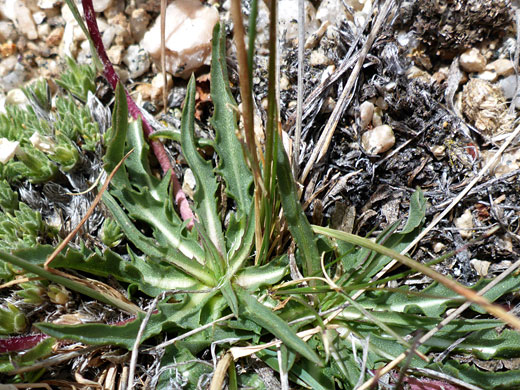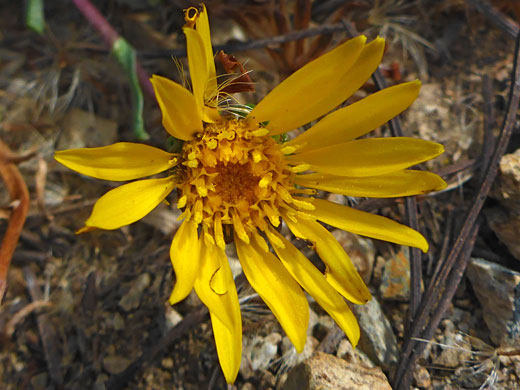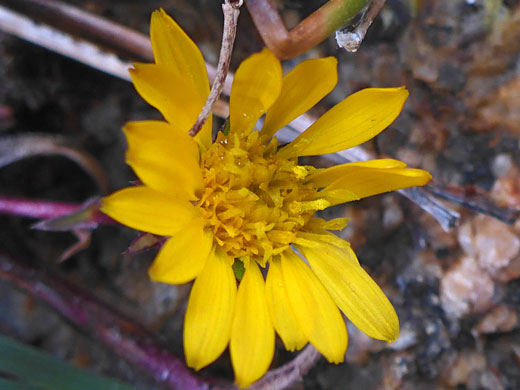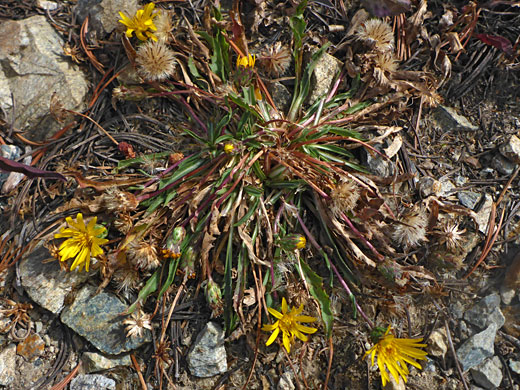Common name:
Alpine flames
Family:
Scientific name:
Pyrrocoma apargioides
Main flower color:
Range:
California, Nevada, and a small part of western Utah
Height:
Up to 8 inches
Habitat:
Moist meadows, woodland openings, rocky hillsides, from 7,000 to 12,000 feet
Leaves:
Hairless, lanceolate to oblanceolate, up to 4 inches long, lined with a few teeth
Season:
July to September
Pyrrocoma apargioides is found mainly in the Sierra Nevada and the White Mountains of California, plus a few isolated locations in Nevada and Utah. Leaves are mainly basal, relatively long and thin, lined with a few well-separated teeth; stem leaves are smaller, and have entire edges. Uppermost stem leaves are similar in appearance to the phyllaries. Leaves and stem are usually hairless, less often sparsely tomentose. Stems are often purplish, while leaves have a leathery appearance.
Flowerheads are borne singly at the top of the stem; they contain from 11 to 40 yellow ray florets and up to 90 yellow disc florets. The rays are orange when in bud, especially underneath, where the color can persist. The phyllaries, in three or four rows, are oblong in shape, colored green, often with purplish margins; surfaces are hairless.
Flowerheads are borne singly at the top of the stem; they contain from 11 to 40 yellow ray florets and up to 90 yellow disc florets. The rays are orange when in bud, especially underneath, where the color can persist. The phyllaries, in three or four rows, are oblong in shape, colored green, often with purplish margins; surfaces are hairless.
All Contents © Copyright The American Southwest | Comments and Questions | Contribute | Site Map


